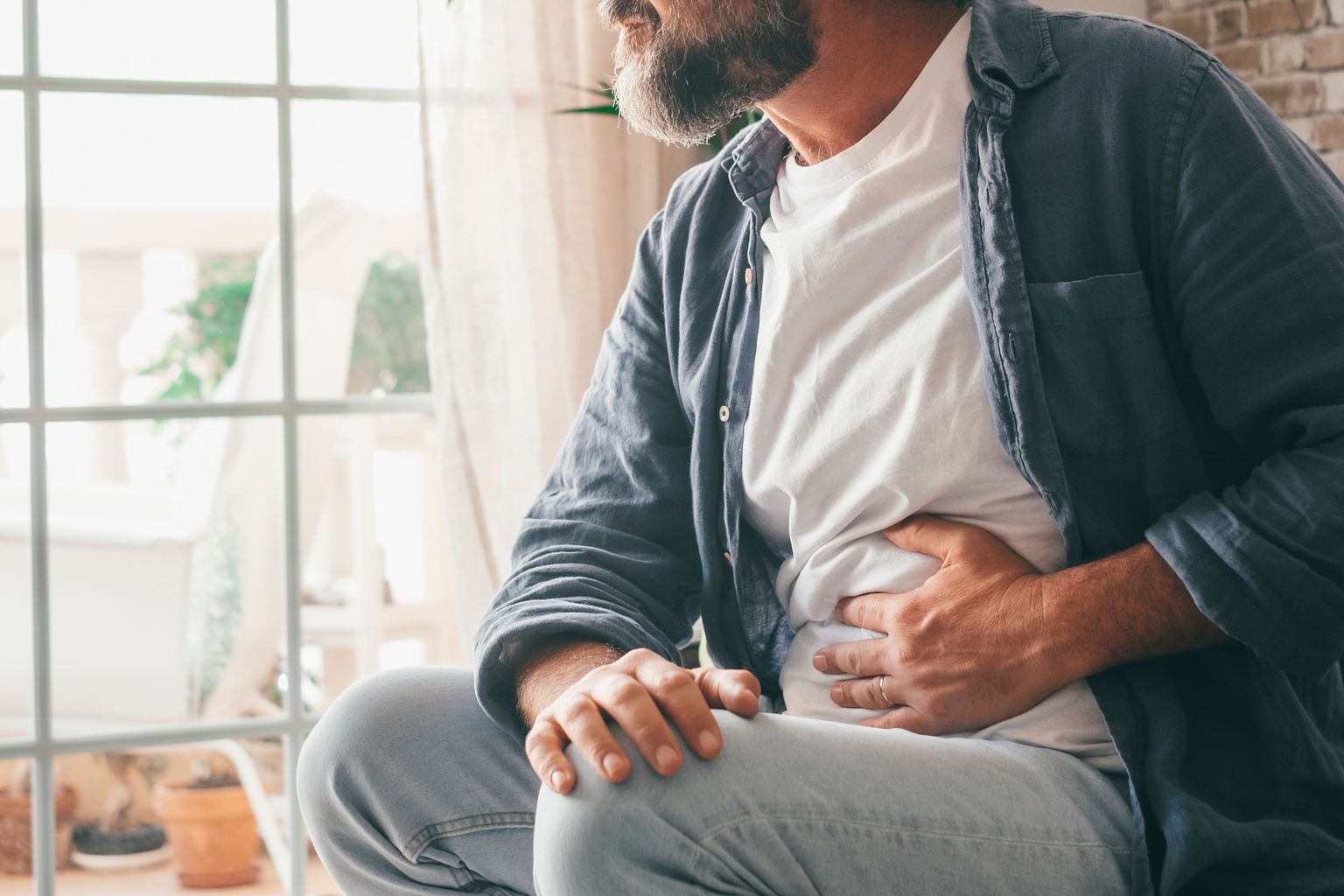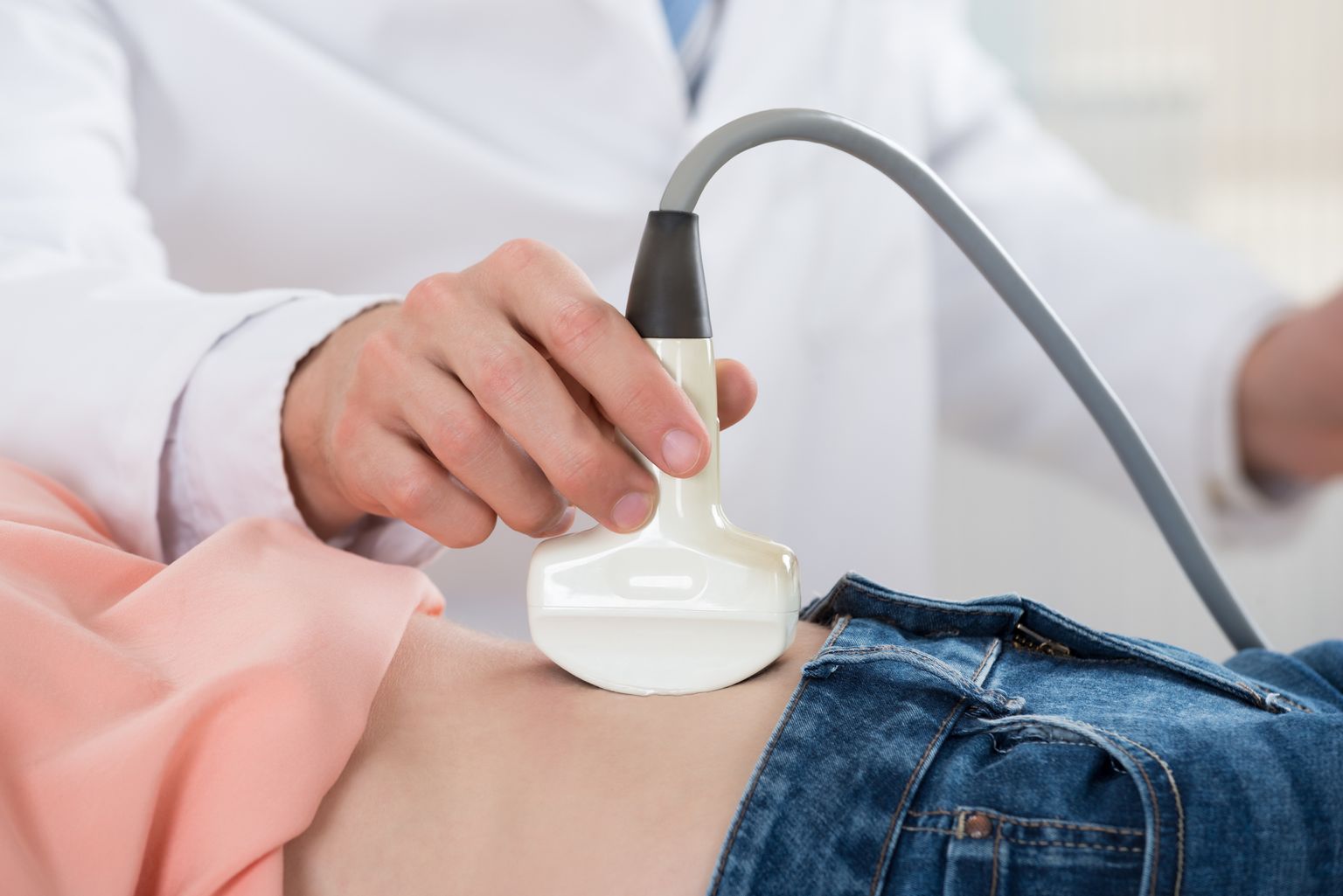Basics
Most people are affected by abdominal pain at some point in their lives. The intensity, location and symptoms can vary. Numerous diseases of the digestive tract and metabolic disorders manifest themselves with the symptom of abdominal pain.
| International Classification (ICD) | R10.- |
| Symptoms | abdominal pain, decongestant, intermittent and spasmodic pain, Pain in the back, shoulder area and genital area, Muscular defensive tension of the abdomen, Fever, Diarrhea, Nausea, Vomit, Reduced general condition |
| Possible causes | high-fat food, fast eating habit, Metabolic diseases, Appendicitis, inflamed gallbladder, Infection, Peritonitis, Menstruation |
| Possible therapies | Medication, surgical procedure, Infusion therapy, Oxygen therapy |
Most people are affected by abdominal pain at some point in their lives. The intensity, location and symptoms can vary. Numerous diseases of the digestive tract and metabolic disorders manifest themselves with the symptom of abdominal pain.

Severe abdominal pain is also referred to as acute abdomen. Due to the nature of the pain and its intensity, it can often be correctly classified as a clinical picture. Other symptoms that frequently occur in the course of acute abdominal pain are Fever, diarrhea, stool retention and vomiting. As acute abdominal pain cannot always be clearly classified on the basis of the medical history or clinical examination, laboratory parameters and imaging examinations are also important in the clarification of abdominal pain.
Acute abdominal pain can be triggered by a variety of illnesses. Often a heart attack, a hernia or kidney stones can also cause pain in the abdominal area.
Common causes of abdominal pain are
Inflammation of the appendix (appendicitis)
Intestinal obstruction
Stomach and intestinal ulcers
Chronic intestinal diseases (e.g. Crohn's disease, ulcerative colitis)
Acute inflammation of the mucous membranes (mucositis)
| Most common causes of an acute abdomen | Percentage |
| Acute appendicitis (inflammation of the appendix ) | 20 % |
| Biliary colic in the context of gallbladder inflammation | 10 % |
| Intestinal obstruction (ileus) | 5 % |
Rare causes of acute abdominal pain are pneumonia, pulmonary embolism, cardiovascular diseases (e.g. heart attack or aortic aneurysm), urogenital diseases (e.g. kidney stones), lead poisoning and neurological diseases (e.g. herpes zoster). In older patients, abdominal pain is often triggered by ileus, diseases of the gallbladder, constrictions caused by tumors (e.g. colon carcinoma) or vascular diseases. Young patients, on the other hand, suffer more frequently from appendicitis or gynecological problems (e.g. rupture of an ovarian cyst).
An acute abdomen is characterized by the sudden onset of severe pain in the abdominal area. In addition, the abdomen often shows a hard abdominal tension. An unclear abdomen is first clarified internally or with the help of imaging. In contrast, an acute abdomen with a hard abdomen usually requires surgery (e.g. appendicitis).
Around 10% of all patients present to the emergency department with abdominal pain. Of these, 20 % have an acute abdomen (emergency) and 30 to 40 % suffer from non-specific abdominal pain (abdominal complaints).
Leading symptoms of abdominal pain:
Abdominal tenderness (diffuse or localized)
Nausea and vomiting
Flatulence and stool changes (e.g. constipation)
Circulatory problems (up to and including shock)
Reduced general condition
Fever
Relaxed posture and breathing
Transmission of pain to associated dermatomes
In the case of acute and severe abdominal pain, the attending physician should always ask 6 main questions:
When: After what event did the pain occur?
How long: Time course of the pain and urgency of the situation
Why: In what context did the pain occur?
How: Sudden pain or slowly increasing tendency
Where: Localization in the abdomen
Character of the pain: e.g. burning, cramping, pressing, etc.
In the case of an acute abdomen, the following parameters should be determined as standard:
Blood count (hemoglobin, leukocytes, hematocrit)
Serum parameters (CRP, electrolytes, glucose, lipase, troponin, creatine kinase, liver parameters, procalcitonin)
Blood gas analysis
Urine status
Further helpful imaging to clarify abdominal pain are abdominal ultrasound (sonography), X-ray examinations or computer tomography (CT). A gastroscopy or colonoscopy is often performed in the pain-free interval to clarify the cause.

Abdominal ultrasound can be used to suspect or even prove numerous diseases such as gallbladder inflammation, gallbladder carcinoma, appendicitis, pancreatitis, kidney stones or intestinal obstruction (ileus). Despite the sensitivity of imaging, studies have shown that the doctor's experience is often more important than laboratory or imaging procedures when it comes to quickly clarifying the cause of abdominal pain.
Increased tenderness on palpation indicates irritation of the peritoneum (peritonitis). A distinction is made between diffuse and localized induration. Diffuse means that the entire abdomen is relatively hard. This is often an acute inflammation of the appendix (appendicitis) or an acute inflammation of the pancreas (pancreatitis). Localized tension is an indication of illness in this area, such as a ruptured stomach ulcer. Tenderness in certain areas occurs under the right ribcage in the case of cholecystitis and under the left ribcage in the case of a gastric ulcer. Appendicitis is characterized by (releasing) pain after and when pressing or stroking the abdomen in an anti-clockwise direction.
The treatment of abdominal pain varies depending on the cause, and sometimes patients even require intensive medical care.
Basic monitoring in the clinic for abdominal pain includes
Heart rate
blood pressure
temperature
blood sugar
Fluid balance (focus on balancing)
Depending on the condition and cause of the abdominal pain, drug therapy may include
Painkillers (e.g. metamizole)
oxygen therapy
Antiemetics (e.g. ondansetron)
Infusion therapy (if necessary, nutrition via the vein)
The prognosis for abdominal pain varies depending on the trigger.

Home remedies for abdominal pain include relaxation (e.g. massages or walks), plenty of fluids (e.g. aniseed or fennel tea), application of heat (e.g. hot water bottles) and a gentle diet (e.g. various soups or low-fat food). In the case of non-specific abdominal pain, e.g. after a hearty dinner, chamomile tea and a light diet may be sufficient to treat the pain.


Ad
Ad